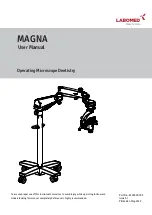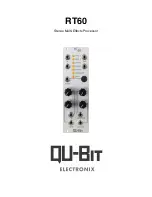
P/N 53063-30, Manual revision: B
2-7
Describing the Cell Saver 5+ System Components
Modify control keys
Figure 2-6, Modify control key section
These keys are also “mode-insensitive” and will allow the operator to
change certain procedure parameters for a given CS5+ procedure and /or
subsequent procedures. The keys become active during protocol selection,
protocol setup and other various points during both automatic and manual
operation.
Key
Purpose
Modify
Used to activate or deactivate the other modify “action”
keys. When active, the operator can enter the modify loop
and the other keys will be backlit.
!
/Yes
Used to increase a numerical value by a specific increment.
Used to respond “yes” to a Yes/No question.
"
/No
Used to decrease a numerical value by a specific increment.
Used to respond “no” to a Yes/No question.
Select
Used to scroll a list of parameters or questions.
















































